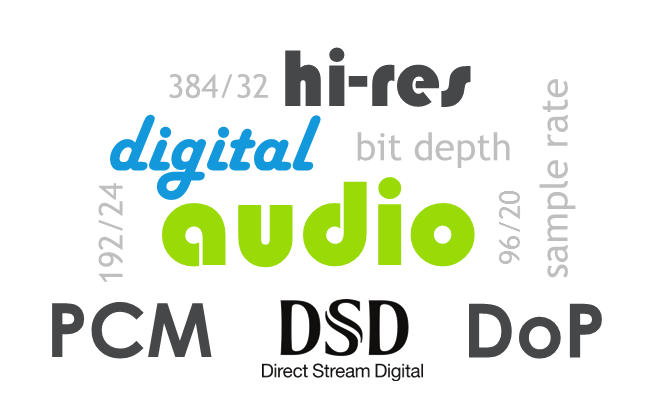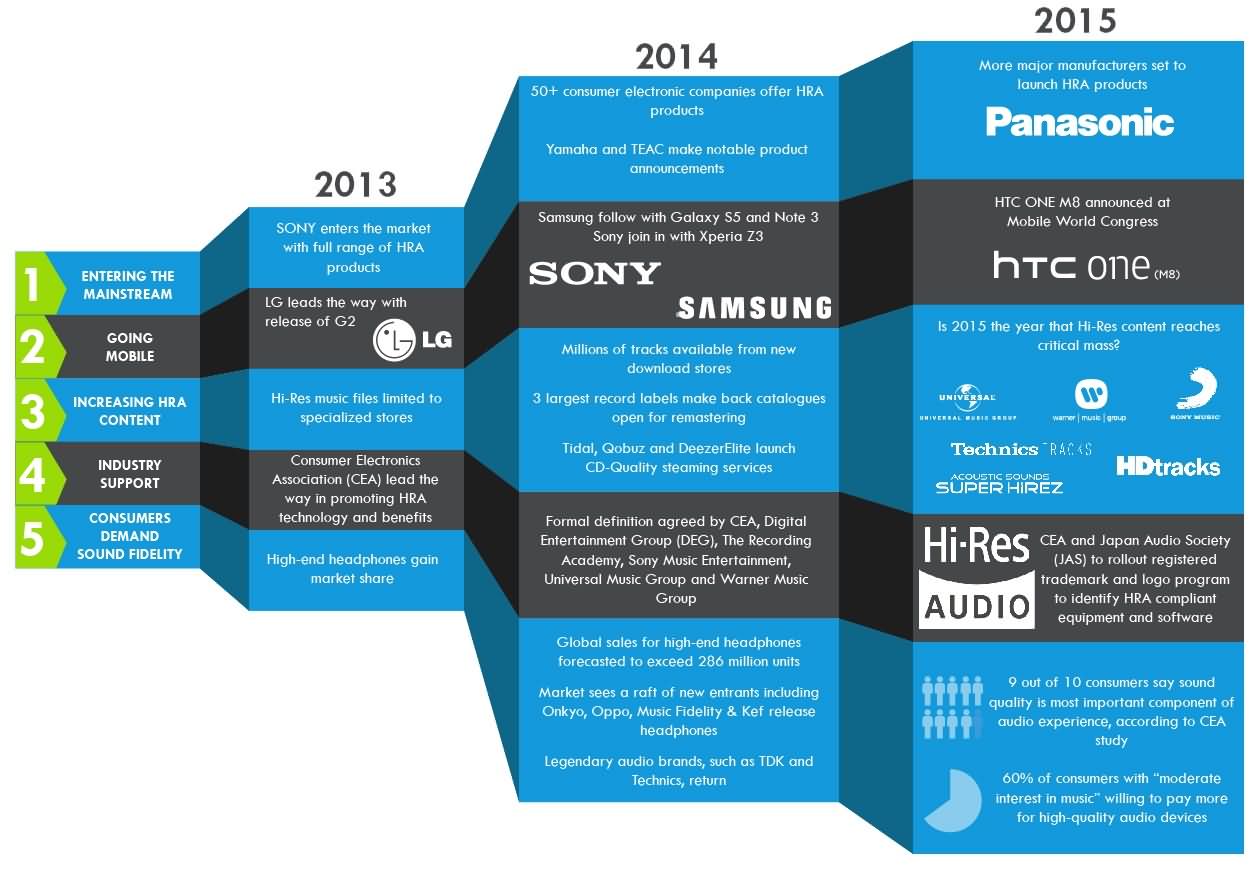Audiophile Hardware Muscle
Not the virtual digital software EQ
Hi-Res Audio: Discover the audio formats behind digital music

http://www.xmos.com/blog/mark/post/hi-res-...gn=Hi-res-audio
Onkyo DP-CMX1 Hi-Res Audio Smartphone hands on [english]
This is what I think the first hands on video worldwide of the Onkyo DP-CMX1 Hi-Res Audio Smartphone, shot at CES 2017!
The device features two DACs from ESS and dedicated amps for an absolute premium audio experience, featuring two headphone jacks, but also has a 5.0 inch 1080p IPS display, a Snapdragon 808 hexacore SoC from Qualcomm, 3GB RAM and 128 GB Flash storage, a 16 MP rear camera and an 8 MP front-facing camera.
VIVO
Xiaomi
Meizu

Vivo Hifi 2.0 on Vivo X5 Max
HiFi 2.0

LG V10
New
HTC ONE A9 GOES OFFICIAL: ALL METAL BODY, SNAPDRAGON 617, ANDROID MARSHMALLOW, 13MP CAMERA, HI-RES AUDIO AND MORE
http://www.lowyat.net/2015/80040/htc-one-a...audio-and-more/
Samsung Galaxy S7 rumored to sport magnesium build, Hi-Fi audio
http://www.gsmarena.com/samsung_galaxy_s7_...-news-14582.php
LG G5 Hi-Fi Plus Hi-res Audio Module, Bang and Olufsen sound into a modular DAC.
Xplay 5 Elite
ESS Brings Music to Life in New Vivo Flagship Smartphone
New Xplay 5 Elite Smartphone Features Twin ES9028 SABRE HiFi DAC Design to Power Vivo HiFi 3.0
http://www.esstech.com/index.php/en/news/n...hip-smartphone/
QUOTE
1) Integrated DAC Chip (DAC + Headphone amplifier): Generally this types of IC chip have lower audio performance compared to other type of DACs but are very cost effective. An example will be the AKM AK4375 chip used in V3 & V3Max which have an inbuilt stereo voltage output DAC combined with a Class-G headphone amplifier (an operational amplifier to amplify the volume) all in a single integrated chip.
2) Voltage Output DAC: These are discrete stereo DACs and offer far better audio quality than integrated solutions like AKM AK4375 and are hence expensive. An example will be the renowned Cirrus Logic CS4398 which produces analog voltage signals from digital data fed from the smartphone CPU. You can feed this output directly to headphones to listen to music but the signal will be very feeble and hence requires a discrete headphone amplifier to pump up the volume. Vivo X5Pro uses the CS4398 with a discrete Maxim MAX97220 operational amplifier (headphone amplifier), hence the sound over headphones is loud and clear with the punch to drive audiophile headphones.
3) Current Output DAC: The most expensive option with the highest audio performance. Here the DAC does not produce analog voltage(V) signals required to drive headphones from the digital audio stream of CPU but instead produces current(I) as output. ESS as the best DAC manufacturer produces such expensive & performance oriented DAC in the name of Sabre ES9018 for smartphones. But with performance comes cost & complications in hardware design as their comes an additional step in the audio path where the current output from this DAC needs to be converted to voltage signals on which headphones operate. This conversion is ultra critical for the final sound signature and in producing the desired tonality. ESS never wanted any other manufacturer to handle such a critical stage for their DAC and hence on Vivo's insistence created the ESS ES9601 operational amplifier to be exclusively mated with ES9018 DAC and perform this conversion. Mind you ES9601 op-amp is exclusive for Vivo and no other manufacturer can claim it. Vivo used this pair in their X5Max handset for the first time and additionally roped in another great name Texas Instruments to make the best performing OPA1612 operational amplifier (headphone amplifer) which further amplified the voltage signals from the ES9018 op-amp to the headphone out. The headphone volumes are so high and clear you can drive any audiophile in-ear headphones to the maximum with X5Max.
5 Key Trends in Hi-Res Audio2) Voltage Output DAC: These are discrete stereo DACs and offer far better audio quality than integrated solutions like AKM AK4375 and are hence expensive. An example will be the renowned Cirrus Logic CS4398 which produces analog voltage signals from digital data fed from the smartphone CPU. You can feed this output directly to headphones to listen to music but the signal will be very feeble and hence requires a discrete headphone amplifier to pump up the volume. Vivo X5Pro uses the CS4398 with a discrete Maxim MAX97220 operational amplifier (headphone amplifier), hence the sound over headphones is loud and clear with the punch to drive audiophile headphones.
3) Current Output DAC: The most expensive option with the highest audio performance. Here the DAC does not produce analog voltage(V) signals required to drive headphones from the digital audio stream of CPU but instead produces current(I) as output. ESS as the best DAC manufacturer produces such expensive & performance oriented DAC in the name of Sabre ES9018 for smartphones. But with performance comes cost & complications in hardware design as their comes an additional step in the audio path where the current output from this DAC needs to be converted to voltage signals on which headphones operate. This conversion is ultra critical for the final sound signature and in producing the desired tonality. ESS never wanted any other manufacturer to handle such a critical stage for their DAC and hence on Vivo's insistence created the ESS ES9601 operational amplifier to be exclusively mated with ES9018 DAC and perform this conversion. Mind you ES9601 op-amp is exclusive for Vivo and no other manufacturer can claim it. Vivo used this pair in their X5Max handset for the first time and additionally roped in another great name Texas Instruments to make the best performing OPA1612 operational amplifier (headphone amplifer) which further amplified the voltage signals from the ES9018 op-amp to the headphone out. The headphone volumes are so high and clear you can drive any audiophile in-ear headphones to the maximum with X5Max.

http://www.xmos.com/blog/jacqui/post/5-key...ds-hi-res-audio
Is the audio market finally getting to grips with Hi-Res Audio (HRA)?
Here are 5 key trends emerging in this competitve and fast paced market.
1. Entering the mainstream
2. Going mobile
3. Increasing Hi-Res content
4. Cross-industry collaboration & support
5. Consumer demand for sound fidelity
1. Enters the mainstream
With consumer electronics giant Sony entering the market at the end of 2013 the HRA movement gathers momentum. Sony launches a full product range from hi-res capable headphones, amplifiers and portable players to high-end audio systems and speakers, catering for both the most demanding audiophiles and the average consumer who simply wants their music to sound better on the go!
Other manufacturers soon paid attention as where Sony leads others quickly follow.
By the end of 2014 there were more than 50 consumer electronics companies offering HRA products with notable announcements from Yamaha and TEAC. This trend continues in 2015 with other major consumer electronics manufacturers such as Panasonic set to launch products.
Is HRA finally on the cusp of becoming a mainstream technology enjoyed by the mass market and not just audiophiles?
2. HRA goes mobile
Smartphones offer convenience. A single device allowing each of us to stay in contact, access information and listen to our favourite music whenever and wherever we want. However not everyone is happy with the sound fidelity or listening experience on the average smartphone, a fact recognised by the leading smartphone manufacturers who have introduced support for playback of Hi-Res Audio files (typically 24-bit / 192kHz) on their high end smartphones.
HRA Mobile
LG led the way in 2013 with the release of the G2 and now all the leading brands including Samsung, Sony and HTC support HRA playback on their flagship smartphones & tablets. Today Apple doesn’t support hi-res audio playback on the iPhone 6 over the headphone jack, though it is possible to access Hi-Res Audio via the lightening connector.
3. Increasing availability of Hi-Res content
You’ve got the equipment but where do you find the Hi-Res files to play? Well the good news is that there are an ever growing number of online stores offering Hi-Res audio downloads and as well as the emergence higher quality streaming services laying the first tentative steps towards high resolution streaming.
HRA Availability
No longer is Hi-Res content just the preserve of specialised classical download stores or high-end AV brands, such as Linn and Naim.
2014 saw a rise in independent stores across all regions offering high resolution downloads catering for all genres including SuperHiRez by Acoustic Sounds, PonoMusic and Quobuz, adding to the original pioneers such as HDTracks and HiResAudio. Recently Technics and Onkyo have also lent their weight to Hi-Res audio with the launch of the Technics Tracks and e-Onkyo download stores.
If download isn’t your thing, don’t worry. There are several CD-quality streaming services already available from Tidal, Qobuz and DeezerElite with the first ‘true’ Hi-Res streaming service is expected before the end of the year.
HRA Services
But the story doesn’t stop there. One of the most exciting announcements of last year was the announcement by the world’s 3 largest record labels (Sony Music Entertainment, Universal Music Group and Warner Music Group) that they are making their back catalogues available for re-mastering to increase the availability of content and are encouraging artists and studios to record new music in high resolution.
So 2015 could be the year when critical mass is reached and high resolution content becomes as freely accessible as MP3s?
4. Cross industry collaboration & support
For any market to reach its full potential requires cross-industry cooperation and collaboration. In the case of Hi-Res Audio this effort was led by the Consumer Electronics Association (CEA) in conjunction with retailers, artists, record labels and major electronics manufacturers including LG, Samsung and Sony to promote the technology and benefits.
This collaboration has also led to a formal definition for Hi-Res Audio being agreed by industry bodies, the CEA, Digital Entertainment Group (DEG) and The Recording Academy, and record labels, Sony Music Entertainment, Universal Music Group and Warner Music Group.
HRA Badge
The CEA has also partnered with the Japan Audio Society (JAS) to promote Hi-Res Audio and nurture the nascent market, including the rollout of a registered trademark and logo program to enable consumers to easily and quickly identify compliant equipment and software.
Last, but not least, Hi-Res Audio has high profile backing from artists such as Neil Young, and Moby as they strive to bring the listener into the studio and experience the music as the artist intended. Watch YouTube videos here…
5. Consumer demand for improved sound fidelity
Finally and perhaps most importantly is the continuing demand from consumers for improved sound fidelity. This is reflected in the increasing sales of headphones and the dominance of high-end brands such as Beats and Sennheiser, with global sales for 2014 forecasted to exceed 286 million units.
The strong growth has seen the return of legendary audio brands such as TDK, and a raft of new entrants including audiophile equipment vendors Onkyo, Oppo and Music Fidelity, consumer electronics giant Samsung, as well as legendary brands McIntosh and KEF.
HRA
Now some would say that headphones are more about fashion than a reflection on sound quality but the Consumer Electronics Association (CEA) disagrees. In studies they found that sound quality is the most important component of a quality audio experience for nine out of 10 consumers. And more importantly amongst consumers with only a moderate interest in audio, 60% were willing to pay more for high-quality audio devices.
Against such a backdrop of market forces, converging technology, industry support and latent demand, is Hi-Res audio set to become the digital music format of the future? Let us know what you think.
This post has been edited by wkkm007: Feb 28 2017, 07:16 PM


 Oct 21 2015, 03:20 PM, updated 9y ago
Oct 21 2015, 03:20 PM, updated 9y ago
 Quote
Quote


 0.0183sec
0.0183sec
 0.49
0.49
 5 queries
5 queries
 GZIP Disabled
GZIP Disabled